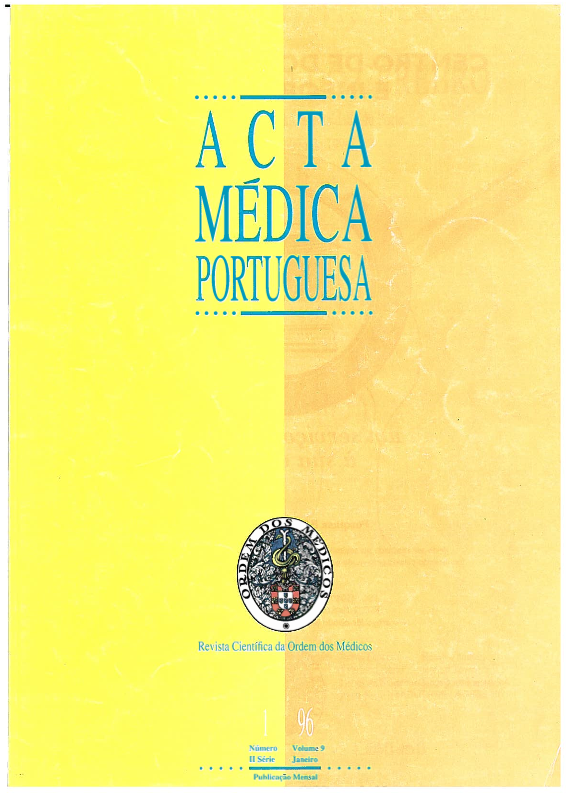A homocisteinemia como factor de risco de doença vascular cerebral. A importância da idade e dos nìveis de homocisteinemia.
DOI:
https://doi.org/10.20344/amp.2545Resumo
To evaluate importance of homocysteinemia as risk factor of thrombotic cerebrovascular disease, in terms of age and homocysteinemia levels.A group of patients under 55 years old (n = 35, 21 males) that had suffered a stroke 3 months to 1 year before the study, defined by clinical criteria and the presence of cerebral infarction confirmed by tomography, without history or predisponents to embolic disease. The patients were matched with a group of controls without vascular pathology of a check-up program, in terms of age and sex. Patients and controls with history of alcoholism, signs or laboratory of renal or hepatic insufficiency or with history of recent ingestion of vitamins of the group B were excluded since these conditions could influence homocysteinemia levels. We measured to patients and controls the plasmatic basal homocysteinemia and homocysteinemia 6 hours after methionine overload of 0.1 g/Kg body weigh. We estimated case-control odds ratio of hyperhomocysteinemia globally and by age groups, and odd ratio of different levels of homocysteinemia.Hyperhomocysteinemia case-control global odds ratio was 5.7, being higher in younger patients (8.8 below and 3.5 after the age of 45 years). Homocysteinemia as a risk factor of cerebrovascular disease presented as a continuous effect: low homocysteinemia was protective, and the higher the homocysteinemia, the higher the cerebrovascular risk proved to be. In these circumstances, heterozygozyty of cysthationine beta synthase deficiency, refered as the more important cause of hyperhomocysteinemia, cannot account for most of the cases of hyperhomocysteinemia.Downloads
Downloads
Como Citar
Edição
Secção
Licença
Todos os artigos publicados na AMP são de acesso aberto e cumprem os requisitos das agências de financiamento ou instituições académicas. Relativamente à utilização por terceiros a AMP rege-se pelos termos da licença Creative Commons ‘Atribuição – Uso Não-Comercial – (CC-BY-NC)’.
É da responsabilidade do autor obter permissão para reproduzir figuras, tabelas, etc., de outras publicações. Após a aceitação de um artigo, os autores serão convidados a preencher uma “Declaração de Responsabilidade Autoral e Partilha de Direitos de Autor “(http://www.actamedicaportuguesa.com/info/AMP-NormasPublicacao.pdf) e a “Declaração de Potenciais Conflitos de Interesse” (http://www.icmje.org/conflicts-of-interest) do ICMJE. Será enviado um e-mail ao autor correspondente, confirmando a receção do manuscrito.
Após a publicação, os autores ficam autorizados a disponibilizar os seus artigos em repositórios das suas instituições de origem, desde que mencionem sempre onde foram publicados e de acordo com a licença Creative Commons









